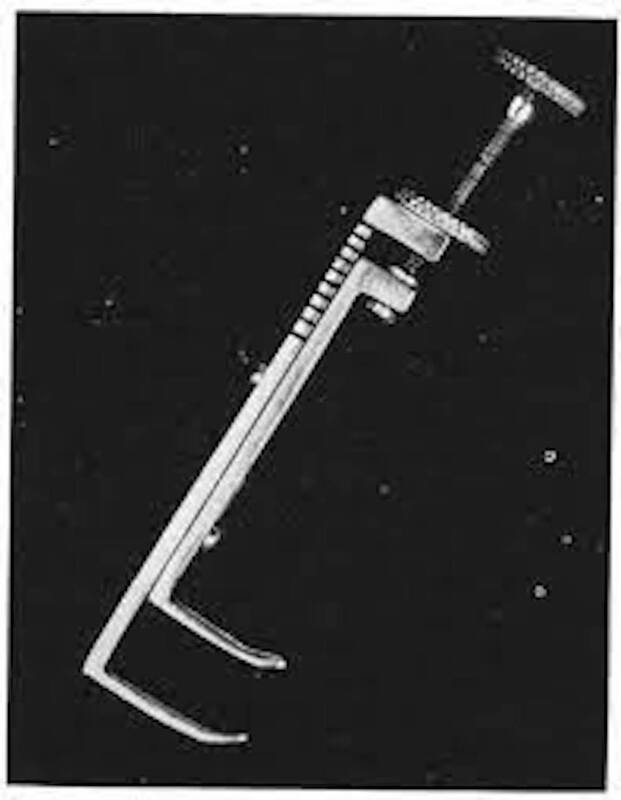 "MR Conditional" Crutchfield carotid artery clamp (From Dr J Keshavamurthy Radiopaedia.org)
"MR Conditional" Crutchfield carotid artery clamp (From Dr J Keshavamurthy Radiopaedia.org)
Don't worry. You probably never will.
Carotid artery vascular clamps were developed in the 1950s to reduce flow to complex intracranial aneurysms and vascular malformations. Names you may have heard include Crutchfield, Poppen-Blaylock, and Selverstone. I am not aware of any such devices being implanted at my institution for the last 40 years, as they have given way to more modern neurointerventional treatments. (These permanently implanted devices should be distinguished from temporary carotid clamps used during open carotid surgery and then removed).
In the off-chance you do encounter an older patient with one of these legacy devices, do not have concern. Nearly all of these clamps were made of non-ferromagnetic titanium and should be safe to scan. There should be no risk of bleeding as the carotid artery is already occluded and no risk of movement as scar formation around the device in the neck musculature should provide stability.
Carotid artery vascular clamps were developed in the 1950s to reduce flow to complex intracranial aneurysms and vascular malformations. Names you may have heard include Crutchfield, Poppen-Blaylock, and Selverstone. I am not aware of any such devices being implanted at my institution for the last 40 years, as they have given way to more modern neurointerventional treatments. (These permanently implanted devices should be distinguished from temporary carotid clamps used during open carotid surgery and then removed).
In the off-chance you do encounter an older patient with one of these legacy devices, do not have concern. Nearly all of these clamps were made of non-ferromagnetic titanium and should be safe to scan. There should be no risk of bleeding as the carotid artery is already occluded and no risk of movement as scar formation around the device in the neck musculature should provide stability.
|
I should comment about the "infamous" Poppen-Blaylock carotid clamp, device that continues to be mentioned decades later as a potentially dangerous device and absolute contraindication to MR imaging. These clamps were made of ferromagnetic stainless steel and did indeed experience significant magnetic torque and displacement in bench testing. However, being 5-6 cm in length they were never permanently implanted and removed from the patient after short-term use. So as far as I am concerned, all Poppen-Blaylock clamp references should be deleted and relegated to the bins of MR history, as they will never be encountered now or in the future.
|
Advanced Discussion (show/hide)»
No supplementary material yet. Check back soon!
References
Teitelbaum GP, Lin MCW, Watanabe AT, et al. Ferromagnetism and MR imaging: safety of carotid vascular clamps. AJNR Am J Neuroradiol 1990; 11:267-272.
Teitelbaum GP, Lin MCW, Watanabe AT, et al. Ferromagnetism and MR imaging: safety of carotid vascular clamps. AJNR Am J Neuroradiol 1990; 11:267-272.

